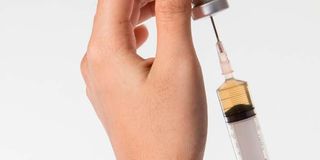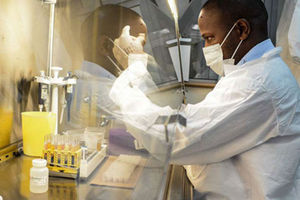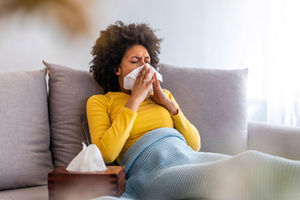All you need to know about Covid-19 vaccines being given in Kenya

By October 2021, Kenya had received five Covid-19 vaccines.
What you need to know:
- AstraZeneca has been largely administered in the United Kingdom, while Sinopharm has been largely used in China.
- Due to variations in mass usage, vaccine development, and preference, many people have paused to wonder what these vaccines entail, how they were developed, and their level of effectiveness.
By October 2021, Kenya had received five vaccines: AstraZeneca, Moderna, Pfizer, Johnson & Johnson, and Sinopharm. Pfizer and Moderna vaccines have largely been administered in the United States. AstraZeneca has been largely administered in the United Kingdom, while Sinopharm has been largely used in China. Johnson & Johnson was first administered in South Africa. Due to variations in mass usage, vaccine development, and preference, many people have paused to wonder what these vaccines entail, how they were developed, and their level of effectiveness.
Pfizer-BioNTech (BNT162b2): This vaccine was developed by the US and German pharmaceutical companies, Pfizer Inc, and BioNTech SE. This vaccine is taken in 2 doses. It is stored at between -80 degrees Celsius to -60 degrees Celsius. It has 95 percent efficacy. According to the World Health Organization, Pfizer is safe and effective in people with health conditions that are associated with an increased risk of severe disease. “These conditions include hypertension, diabetes, asthma, pulmonary, liver or kidney disease, as well as chronic infections that are stable and controlled,” says WHO in its public vaccine guidelines. The WHO recommends that this vaccine be administered with an interval of between 21 and 28 days. However, where there are higher cases of infection, the second dose can be delayed to allow for first dose vaccinations. “Countries facing a high incidence of COVID-19 combined with severe vaccine supply constraints could consider delaying the second dose up to 12 weeks in order to achieve higher first dose coverage in high priority populations,” the WHO recommends.
Moderna (mRNA-1273): It was developed in the US by the pharmaceutical firm Moderna in collaboration with the US National Institute of Allergy and Infectious Diseases. It is taken in two doses. It is stored at between -25 degrees Celsius and -15 degrees Celsius. It has 94.1 percent efficacy. According to the WHO, this vaccine can be taken by persons with health complications such as chronic lung disease, significant cardiac disease, severe obesity, diabetes, liver disease, and human immunodeficiency virus (HIV). In addition, the Moderna vaccine can also be taken by pregnant women because the benefits of the vaccine outweigh the potential risks. The WHO recommends that this vaccine be taken at an interval of 28 days. However, this interval can be stretched to 42 days to pave way for higher first dose vaccinations or make time for more vaccine deliveries.
Oxford-AstraZeneca (AZD1222): It was developed in the United Kingdom by the British-Swedish multinational pharmaceutical company AstraZeneca Inc in collaboration with the University of Oxford. There are, however, two versions of this vaccine that are being produced by AstraZeneca-SKBio (Republic of South Korea) and the Serum Institute of India. Both versions have been approved by the WHO for emergency use. This vaccine is taken in 2 doses and can be stored at between 2 to 8 degrees Celsius. It has about 63 percent efficacy. According to the World Health Organization, this vaccine may not be suitable for persons who have a history of severe allergic reactions. The WHO recommends a 0.5ml per dose that should be in intervals of between 8 to 12 weeks.
Johnson & Johnson (Janssen Ad26.COV2.S): It was developed by Janssen Pharmaceuticals which is headquartered in Belgium. It was first administered in South Africa. It is taken in a single dose. It has between 66 percent and 85 percent efficacy. It is stored in temperatures of between 2 and 8 degrees Celsius. “The Janssen Ad26.COV2.S vaccine is safe and effective in people with known medical conditions that are associated with increased risk of severe Covid-19 disease,” says the WHO. These medical conditions include hypertension, chronic lung disease, significant cardiac disease, obesity, and diabetes. According to the WHO, this vaccine can be given to people who have contracted Covid-19 in the past. “However, administrators can delay giving the vaccine to this category of people for up to 6 months from their incident of infection with Covid-19. This will allow people who have not been infected and treated, and others who may be more vulnerable to get the vaccine first,” says WHO. At the same time, the WHO recommends that persons who present with fever and a temperature of 38.5 degrees Celsius should not take the vaccine until their temperature and fever have subsided. Also, persons with a history of anaphylaxis to vaccination should not take this vaccine. Anaphylaxis is a severe allergic reaction that is considered life-threatening. It includes symptoms such as skin rashes, vomiting, shock, difficulty in breathing, and nausea.
Sinopharm: It was developed in China by the Beijing Institute of Biological Products. This vaccine is reported to have up to 79 percent efficacy in preventing Covid-19. It is taken in two doses of 0.5ml. According to the World Health Organization, this vaccine should be taken at a dosage interval of 3 to 4 weeks. “If the second dose is administered less than three weeks after the first, the dose does not need to be repeated. If the administration of the second dose is delayed beyond week 4, the dose should be administered at the earliest possible opportunity,” says WHO.
Quick takeaway: A timeline of when these vaccines were approved for emergency use.
Pfizer BioNTech:
Approved in the United Kingdom on December 1, 2020
Approved in the US on December 12, 2020
Approved in the European Union on December 22, 2020
Approved by the World Health Organization on December 31, 2020
Moderna:
Approved in the US on December 19, 2020
Approved in Canada on December 23, 2020
Approved in Israel on January 4, 2021
Approved in the European Union on January 6, 2021
Approved in the United Kingdom on January 8, 2021
Oxford-AstraZeneca:
Approved in the United Kingdom on December 27, 2020
Approved in India and Argentina on January 3, 2021
Approved in Brazil on January 17, 2021
Sinopharm:
Approved in the United Arab Emirates on December 9, 2020
Approved in Bahrain on December 14, 2020
Approved in China on December 30, 2020
Johnson & Johnson
Approved by the US on February 27, 2020
Approved in the United Kingdom on May 28, 2021
Approved in Canada on March 5, 2021
Approved in South Africa on April 1, 2021 (four months after the vaccine was rolled out to health workers)





